Ultimate Disney Parks Photography Guide
Looking for the best camera or lenses, tips for taking great photos or to improve your photography? This guide offers tutorials to take better photos in a variety of scenes at Walt Disney World, Disneyland, and beyond! (Updated March 22, 2020.)
These tips are key, and will help you take better photos of Disney fireworks, dark rides, Cinderella Castle, and much more that’s specific to the parks. However, the first thing you should do is learn the basics of photography. For this, I highly recommend a copy of Understanding Exposure. Seriously, just get it.
All of the expensive equipment in the world won’t help you if you haven’t learned the basics, and that book is the best way to learn the basics. It’s how I taught myself photography and many others have used it to do the same. A book is a lot cheaper than a new lens, and if you’re a beginner, that book will improve your photography more than a new lens.
Along those lines, realize that no camera “takes good pictures.” Some cameras can help an adept photographer more than others, but if the person taking the photos doesn’t do things right, photos taken with a Nikon D850 can look worse than photos taken with an iPhone. Likewise, many experienced photographers can take better photos with an iPhone than inexperienced photographers can with expensive DSLRs on Auto Mode.
This guide will primarily focus on providing you with resources for learning more about photography, so you can really take your photos to the next level. If you’re sitting around at home practicing social distancing or self-quarantining, the good news is that this is the perfect time to learn photography!
It’s surprisingly easy to improve your photography at home, alternating between reading books and practicing with subjects around your house or in your backyard (my #1 subject for testing out new photography techniques is our cat!). Knowledge is so much more important than equipment, and once you learn more about photography, you realize you don’t need to waste additional money on more equipment!
With that update out of the way, let’s continue with a few of my favorite photography books…
Books
Understanding Exposure – Again, this is the newest edition of the book I used to learn photography. If not for this, I might still be using automatic mode. It is the definitive photography textbook, but written in a way that is accessible for everyone, without being dry and overly technical. It’s a wealth of information, from the basics to some more advanced techniques, this book is the perfect jumping off point.
The Photographer’s Eye – Great composition is paramount to a great photo, but unfortunately it’s one of those things that’s difficult to learn. This book helps any aspiring photographer really learn composition. This is a book to read over and over again.
Scott Kelby’s Digital Photography Boxed Set, Volumes 1, 2, 3, and 4 – A four part series of beginner and intermediate books with plenty of useful tips for veteran photographers, too. The information in these books really runs the gamut, and if ever there were to be a single (or 3 book) series for mastering the craft/business of all types of photography, this would be it.
***Click here for our full list of Photography book recommendations***
Disney Photography Tips
We’ve done a number of blog posts providing tips for improving your photography at Disney. I can’t stress enough that knowledge is the biggest component of taking good photos at Walt Disney World (and beyond!) so you should really read some of the tutorials I’ve written. They have helped a lot of people.
You should read these after you read Understanding Exposure. These guides all assume you have a decent foundation to understand the basics of photography, and you might be confused by these if you don’t know the basics:
- Disney Dark Ride Photography Guide
- How to Photograph Fireworks
- How to Take Great Photos with Your Point & Shoot Camera
- Top 10 Lenses for Disney Parks Photography
- 5 Indispensable Tips for Disney Photography
- Unique Family Photo Ideas at Disney
- Top 10 Tips for Night Photography at Disney
- Tips for Improving Your Photo Composition at Disney
- Tips for HDR Disney Photography
- Best Magic Kingdom Fireworks Spots
- Best Disneyland Fireworks Spots
- Tips for Using Prime Lenses at Disney
- Tips for Using Telephoto Lenses at Disney
- Main Street Electrical Parade Photography Tips
- World of Color Photography Tips
- Fantasmic Photography Tips
- Christmas Photography Tips
- Top 10 Cinderella Castle Photo Spots
- Top 10 Sleeping Beauty Castle Photo Spots
- Neutral Density Filters for Fireworks Photography
This just scratches the surface on the photography guides we’ve written. To read and learn more, browse the photography category of posts on the blog. Once you’ve learned a bit, it might be time to buy some new equipment to help you take better photos. Read on for our buying suggestions…
Cameras
The first thing you need to do is determine which type of camera is right for you. Over the past decade, I’ve tested 20+ cameras and talked with hundreds of beginners who wondered which camera to buy. From that, I’ve learned that the “right” camera for a beginner is almost entirely a matter of personal preference and goals. (If you want look at the equipment I currently carry, check out What’s In My Camera Bag for 2020.)
When thinking about which camera to buy, you have to think about your intent. Are you primarily interested in capturing quality photos of your family’s memorable moments on vacation? Consider a nice point & shoot. Concerned about camera size and weight? Go point & shoot. Want an starter camera that will make learning easier? Again, think point & shoot.
Sony RX100 – This point and shoot has been described by just about everyone who has reviewed it as a game changer. I was skeptical at first, but I drank the Kool Aid, and am loving it. This point and shoot somehow combines a large sensor and a great f/1.8 lens into a compact package. We carry this camera just about everywhere. (Read Our Full Review w/ Photo Samples.)
We think the Sony RX100 is the best starter camera for 75% of people reading this post. The other 25% should consider an entry level DSLR or just stick to using their iPhone for photos (the newer iPhone cameras are exceptional–but still not as good as the Sony RX100).
Nikon D3500 DSLR – This is the perfect entry level DSLR for beginners, offering great bang for your buck in a small size. It has solid image quality when compared to higher level cameras, and only lacks some of the features–definitely a great value.
Nikon D7500 DSLR Camera – If you’re upgrading or are more serious about photography, go straight to the Nikon D7200. The benefits of the D7200 over the lower models are improved dynamic range & high ISO performance, better build quality, better HD video capabilities, and more.
Nikon D750 DSLR Camera – The best bang for buck camera for taking Disney photos. Awesome autofocus, excellent high ISO performance, and amazing image quality. The controls and functionality are great, making this a really versatile camera.
Nikon D850 DSLR Camera – The newest, biggest, and baddest (in a good way) DSLR that offers unparalleled performance. It’s not cheap, but it can outperform pro-grade cameras that cost twice as much. I’ve had this camera for nearly 2 years now and absolutely love everything about it (read my full review for more info and sample photos).
Ultimately, which of these DSLRs you buy depends upon how serious you are about photography. If you’re just getting started, no matter how excited you are about photography, I don’t recommend buying anything above an entry level model, no matter how large your budget.
For more experienced photographers looking to make an upgrade, the Nikon D850 is an amazing camera. It’s pricey, but the results are potentially worth it if you’re serious about photography. I have zero regrets about purchasing it!
Lenses
If you are serious about photography and opt to purchase a DSLR or mirrorless camera, you’ll also want to think about lenses. We have used a lot of lenses over the past few years, and we have reviewed many of these lenses on the blog. So many, in fact, that considering which to buy when your first upgrading your camera gear can be a bit intimidating.
Fortunately, we’ve put together our Top 10 Lenses for Disney Photography List that offers ideas for the best upgrade options at the beginner and intermediate level. There’s a variety of lenses on this list, from prime lenses that are great for portraits and dark rides to fisheye lenses good for fun, creative shots.
The majority of my photos are shot with ultra-wide angle lenses. I love the wide panorama look, and also using these lenses to my advantage to intentionally distort a scene. If you’re considering going wide, read my Ultra Wide Angle Lens Guide. It’ll help choose the right one.
Some of my favorite lenses include the Rokinon 8mm f/3.5 Fisheye Lens, Sigma 18-35mm f/1.8 Lens, Tokina 11-16mm f/2.8, and Sigma 30mm f/1.4. You can read about all of these lenses, and our other top picks, on that top 10 list.
***We have a lot more reviews on our Lens Reviews Page. Read that to decide what’s right for you***
Bags, Tripods & Accessories
A lot of beginners make the mistake of only budgeting for a camera and lens when starting out, only to find out they need other accessories. These things quickly add up and can cost far more than expected.
Some of these things are gadgets and trinkets that can real help out in certain situations, but aren’t universally applicable. I’ve put together a post of the Top 10 Photography Accessories for Disney Photography that are items that will really help with taking photos in the parks (in my experience, a lot of these are useful elsewhere, as well).
Here are some specific things I recommend:
Lowepro SlingShot 102 AW – This bag provides great bang for your buck, and can store your camera with a lens mounted, plus two additional lenses. It’s possible to cram three additional lenses into this in a pinch by using the top pouch for the 50mm f/1.8 or another small lens. It’s much better than the 100AW that it replaced, because you can carry a tripod on the side of it!
Velbon Luxi-L III Tripod – This is a GREAT tripod: incredible value, height, and it collapses to a small size. It’s not perfect, but it’s a balanced tripod and perfect for travel.
Tiffen 77mm Circular Polarizer – A great option for deeply saturated blue skies, but is by no means a necessity. It also acts as a neutral density filter, of sorts. Be careful using polarizers on wide angle lenses. You may not like the uneven results.
Guide Conclusion
As mentioned above, the vast majority of people just getting started in photography are probably best suited by a high-end point and shoot camera, with my absolute top pick being the Sony RX100. This is a great way to get a taste of serious photography with customizable settings and excellent image quality, but in a compact package. Most people won’t outgrow that camera, but if you do, then look at DSLRs or mirrorless cameras.
If you’ve already decided that a DSLR camera is your best option, you’ll want to think about everything you need to go along with it to really take your photography to the next level. If you’re on a limited budget, start out by making 3 upgrades: 1) tripod, 2) Sigma 18-35mm f/1.8, and 3) Tokina 11-16mm f/2.8. I’d say these are the 3 best purchases a new DSLR photographer who wants to photograph the Disney Parks can make to improve their game.
However, if you really want to take your photography to the next level, gear is not what you need–at least not exclusively. What you need is knowledge. You will never take amazing photos in auto mode. You need to start by getting a copy of Understanding Exposure to learn the fundamentals, and then read more advance books, tutorials, and practice like crazy. Anyone can become great at photography, but you can’t get there just by purchasing fancy toys. 🙂
Finally, a word of warning. Don’t take shortcuts when buying photography equipment. Yes, it’s expensive, but I’ve discovered first-hand that buying photo gear on eBay or Craigslist is a huge risk. You don’t know how the seller took care of their gear, if it’s grey market (meaning US manufacturers won’t service it if there’s a problem), or what problems may come up down the road. You also don’t save that much over buying new. Finally, you don’t get a warranty. Things do go wrong with cameras, seemingly inexplicably, and it would really stink for that $1,000 investment to break with no recourse for you.
We’re Amazon Prime members, so we almost always order from Amazon.com. I also recommend Adorama.com
, B&H Photo, or Abes of Maine, but I generally avoid all other online photo retailers (I STRONGLY recommend avoiding J&R Cameras due to two negative experiences I’ve had with them). By the way, if you are considering a purchase of any photography equipment, lenses, or anything else for that matter we would greatly appreciate it if you use the links in this post to make your purchase. It benefits the site, doesn’t cost you a dime, and helps us to keep providing you with useful(?) content!
Your Thoughts
What have you found helped improve your photography? Have other photography tips of your own to add? Other gear recommendations? If you have questions, please leave them in the comments below and I’ll try my best to help!
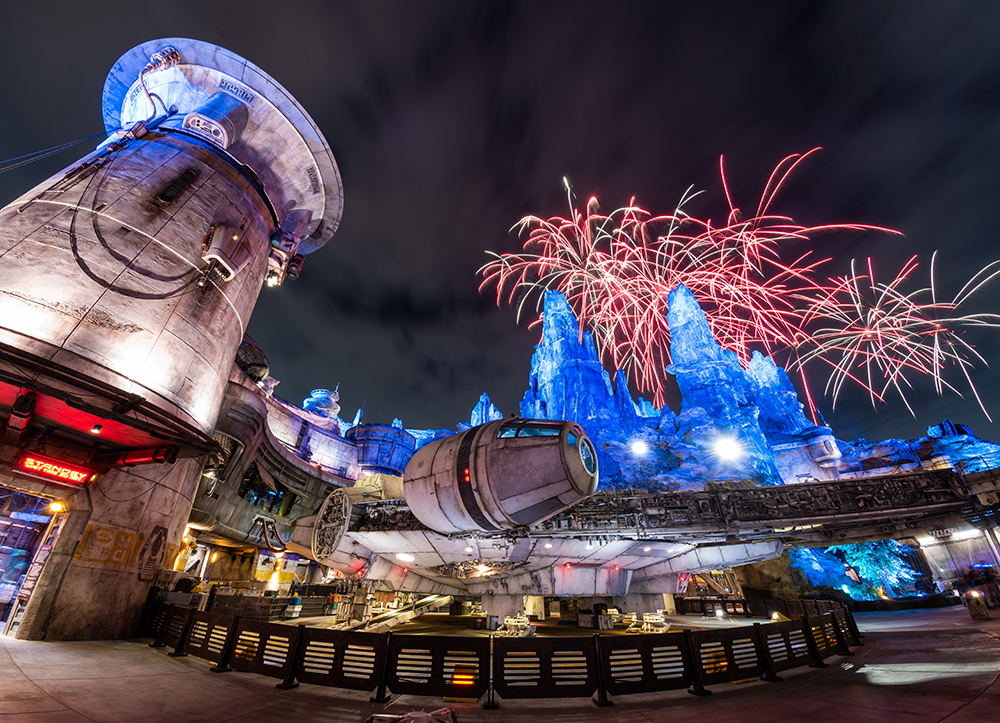

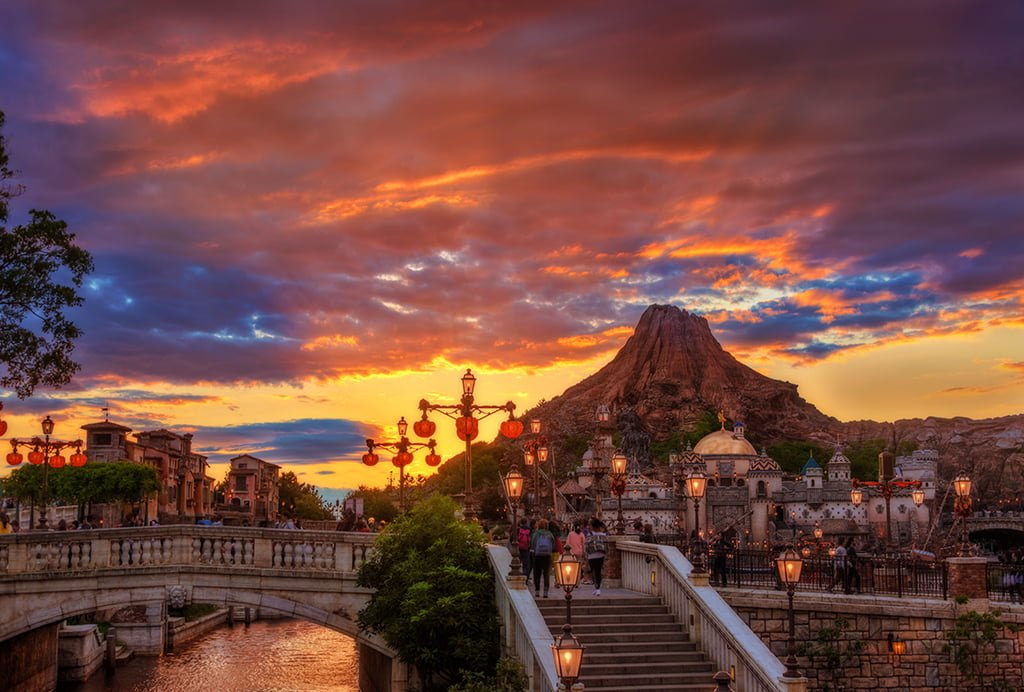
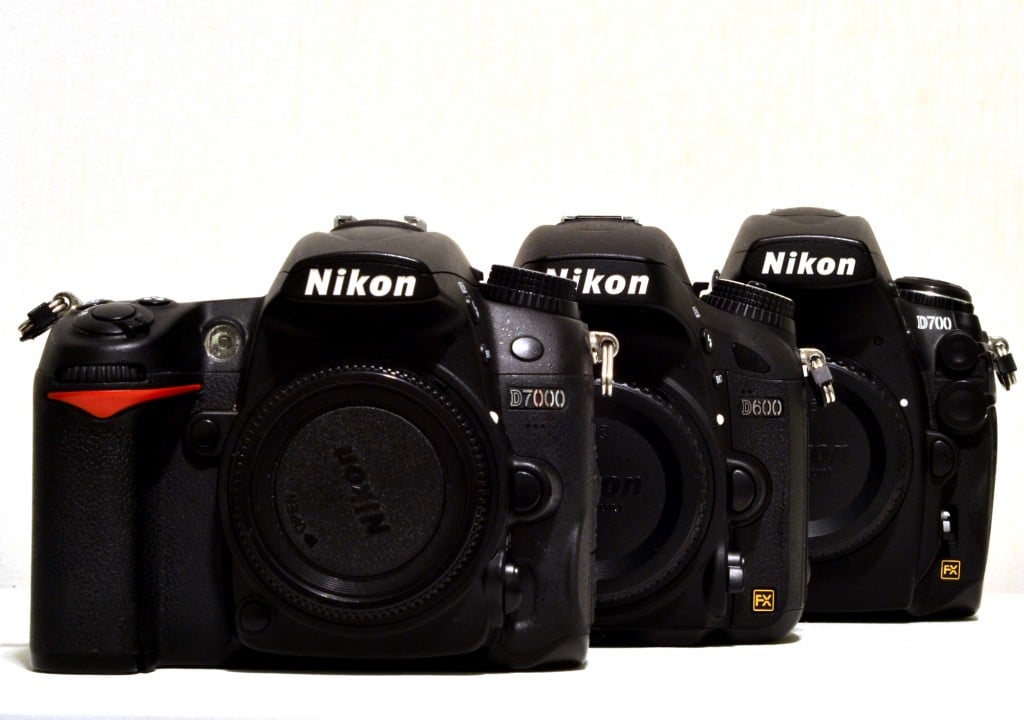
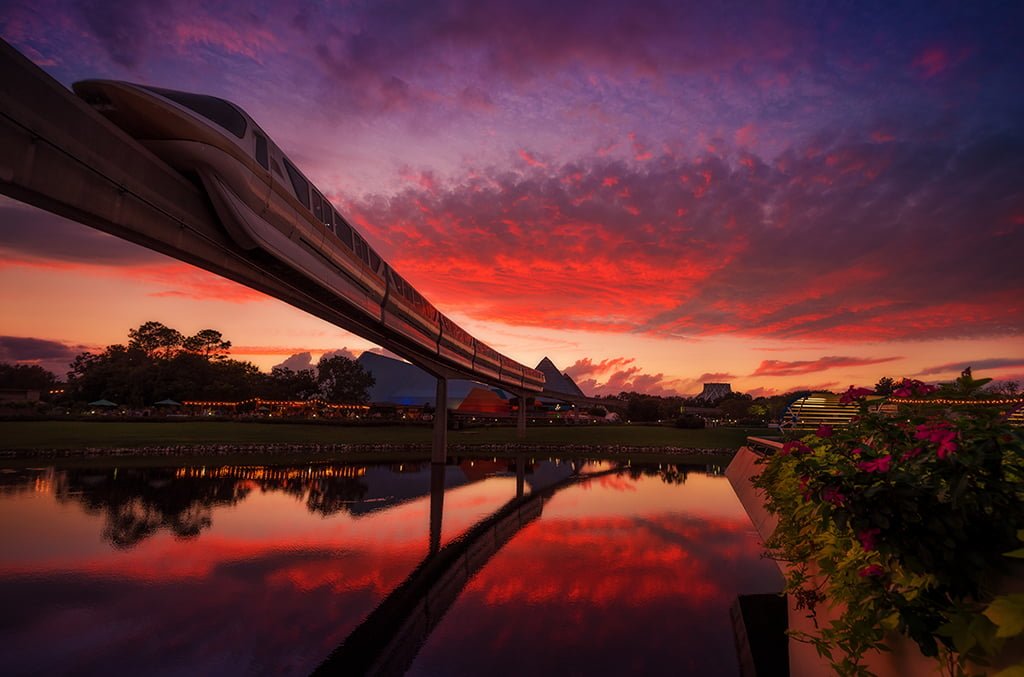
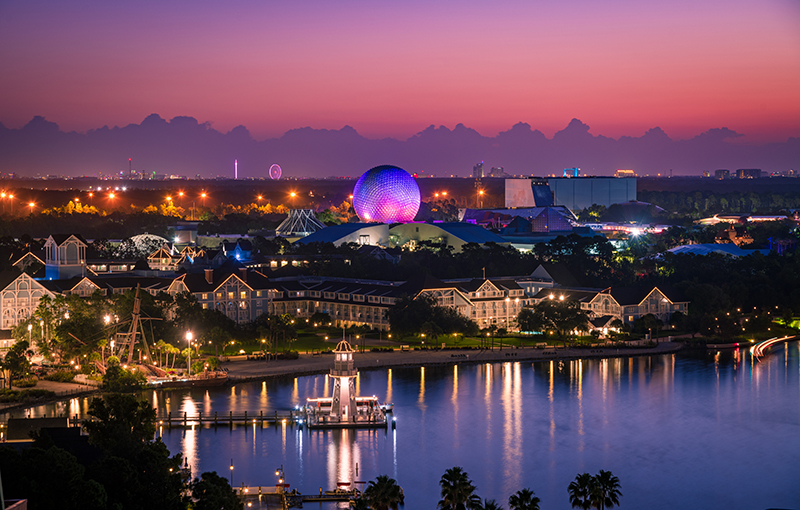
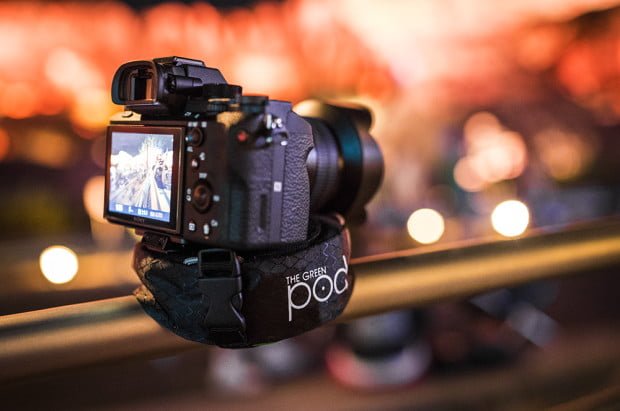
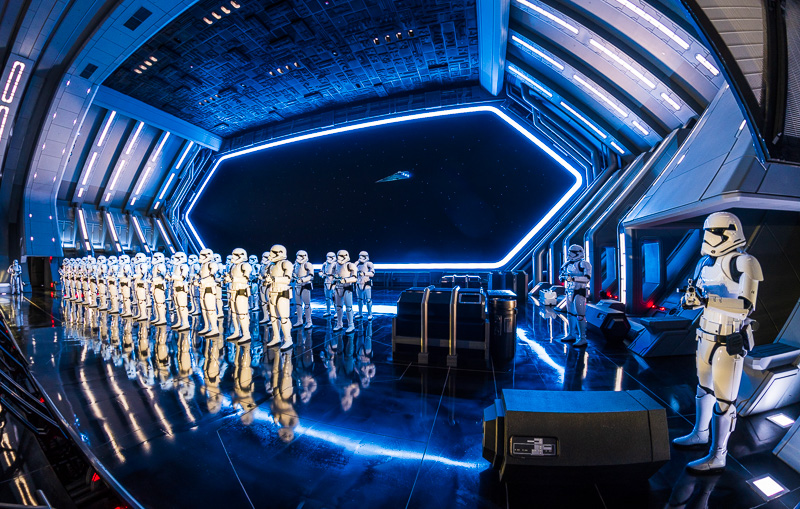

I’m thinking about switching from Canon to Nikon, either a D7500 or D500, any thoughts on these? I know they have the same sensor/processor. I will get the 16-80mm f2.8-4 lens . Thank you
Hello,
First time commenting. I have been going to Disney World since 1994. I have never brought my photo gear before (shame on me). I have a Nikon D5 and I plan on only bringing my 105F1.4, 50F1.8 and maybe my 17-35F2.8. I will probably keep the camera on my Black Rapid strap. I was wondering what bag you would suggest for this set-upto carry around the parks? I would like to bring this on the rides including Space Mountain, Everest etc.
Also do you put your camera in your bag when you are on the more dynamic rides or do you keep it on your body?
And lastly, is there any need typically for a 70-200F2.8 or 300F2.8? I list the aperture because of the size of the lenses.
Thank you for any suggestions and help.
Hello
Great site. I am going to Disney World next month with my 2 children, therefore, we are planning to go on all the rides that we can. However, I am into photography and want to capture the memories of my kids as well but not sure what to do with my camera when going on the rides. I have a Canon 6d with 24-70 lens.
Any advice would be great.
Make sure you take advantage of Disney’s lockers if you want a secure place to keep your camera when you are doing the serious rides!
What would your recommendation be for nighttime photos at Tokyo DL and Tokyo Sea since tripods aren’t allowed?? Do they allow gorilla pods at all?
Hi Tom! Per many of your blog posts, I’m now researching the Sony RX100, and Canon Power Shot G7x cameras. I think I’m leaning towards the RX100 (I’m definitely a newbie as it comes to using a “decent” camera), and am wondering if you can weigh in on my last two sticking points. In your opinion, do you think there’s enough of a difference between the RX100 and the RX100 II to justify the $150 price difference? The major differences seem to be that the II has the tilting LCD screen and WiFi and NFC capability, where the original model does not. I think I’ve made my decision, but where you’ve used these cameras and have practical experience, I’d love if you could add a thought about those two features and how often you think they’d come in handly. Thanks!
Hi
What about the new tripod rule?
I mean i can fit a manfrotto 55 into a backpack wenn i remove the ball head 🙂
Hi Tom,
Love the guide. I always come back here for tips and advice – not just for shooting Disney but for general photography as well. I think my camera bag is 75% full of items you have recommended, so thanks for all of that!
I recently got a GoPro Hero 5 and was wondering if you had any thoughts on shooting Disney with a GoPro instead of a DSLR. Obviously you are somewhat limited by what the GoPro can do compared to a DSLR, but the Hero 5 especially is a nice camera in addition to the video recording capabilities. It’s also much less bulky, so it could be nicer to carry around – especially on long days. Lastly, at the much lower price point it could be much more appealing to the non-professional photographer. Just wanted to know if you had any experience with the GoPros or had ever given any thought to a GoPro specific guide.
Thanks again!
I thought tripods were not allowed in Disney Parks?
Why lug around a heavy DSLR with lenses, batteries, and who knows what else when you can lug around a small, lightweight mirrorless camera that pretty much does what that DSLR will do?
I shoot with a Lumix G6 and G7 and love them. They not only have an electronic view finder but fully tiltable monitor for those hard to get positions that generally make for the most interesting shots.
The optiks are excellent, shooting is fast, and the minimal size and weight make it easy to carry around. You can carry a telephoto lens in your cargo pants pocket or carry a very small bag with you. They also work well in low light if you get one with 16+ megapixel processor. Some, like the fixed lens Fujifilm X30 have all the same features with a very fast lens for those low light situations.
I believe the DSLR will one day be the dinosaur of cameras as the technology is now providing similar results in a smaller package!
Hi Tom and Sarah,
My boyfriend and I will be visiting WDW soon and we were wondering how you both managed to take some awesome photos of yourselves? Did you guys bring a tripod along with you or did you trust someone else to take your pictures?
We’re both a little shy at asking other people to take our pictures but we it anyway just so we both can be in the shot. But any tips you can share with us?
Thank you!
Hey Tom! Fist off I just want to say how much I enjoy reading your blog. I am planning a trip for November of this year and your blog as been so helpful. Even if I wasn’t planning a trip I would still read it because I love the way you right, so thank you!
So now about photography. Since I was young I have always LOVED photography but I never perused it. After reading your blog and knowing I am going to Disney World in a few months I wanted to start learning about it so I can have good quality pictures of our trip. My dad recently gave me his FUJIFILM X100T. I was wondering if you had any advise and/or thoughts about this camera. As of today I haven’t shot it yet.
That Fuji is an excellent camera for a non professional who wants to get excellent results for personal use….You are one very lucky guy to have that Fuji. If you ever find you dislike it…please let me know…thanks, Ron
I wanted to bring a nice camera on our upcoming trip but decided against it. I would be afraid to leave it on the loading ramp of a roller coaster. You can’t take a camera bag on a coaster, can you? I suppose locking it in a locker would be okay, but I would hate having to go back and forth all day. We chose to bring the GoPro Hero 5. Hope it turns out! Do you have tips on GoPros?
iPhone 7 plus or the rx100? Going in decemebe and need a nice camera! Your thoughts would be greatly appreciated!
Tom,
Another great guide as usual. We are heading to WDW in December and I was wondering if you can start including EXIF data with your images and perhaps what ND filters you use for fireworks. I noticed that your images of fireworks and Cinderella’s castle are great. HDR? I have Nikon D810 and DF but I found them getting heavier and heavier over the years so I also bought into the Fuji X-T2 system with a collection of lenses. My travel kit weight dropped by 1/3 and the IQ of my images are very close to the D810 while at high ISO, the images at ISO12800 look like the Df.
Thanks,
Hey Tom:
Always enjoy your posts, and actually read Understanding Exposure thanks to them and I’m interested in buying an entry level DSLR.
What would you recommend between a NIkon D3300 (496$) new and a D5300 (540$) either certified refurbished from amazon or open box from BH Photo? DO you think Amazon certified refurbished is better or BH open box (which according to the page has a one year limited warranty vs amazon’s 90 days)?
Thanks!
Hi Tom,
thanks for this great article. Do you know, if the book Understanding Exposure by Bryan Peterson is also published in german language ???
My parents and I are going to all four of the Disney World parks at the end of the month with my two kids (age 11 and 7).
I’m an avid amateur photographer and don’t mind lugging my DSLR around the park (I’d likely leave the external flash and extra lenses back in the hotel room), but am concerned about taking with it me on many of the rides. Is there a secure spot for example to store it say on Space Mountain or Test Track? Otherwise, I might just use my iPhone 6.
Thanks for the advice and also thanks for the great website/blog. I already purchased several of the items you recommended on Amazon.
Hi Tom. Do you have a waterproof camera recommendation? Something to take to Waterparks.
Helen
Hi Tom! Great article! I have the Nikon D750 but I’m looking for a smaller camera that’s easier to carry around. I like your recommendation for the Sony RX100. I’m wondering what your thoughts are on the new Canon G7x Mark II?
My Canon G7x II actually just arrived yesterday, so I’ll be doing a review of it soon!
How exciting! I’ll wait for your review. Thanks so much!
Hi Tom,
I am a full time professional. Really love and enjoy your images. Would you offer a ‘private’ seminar? Maybe walk around the park for a few hours and teach me the techniques your doing? I have a pretty extensive knowledge of photography. I have never been much of a reader. I learn by doing. I am heading there in December and would love to do that. I of course would pay you for your time. Let me know if you have thoughts on that.